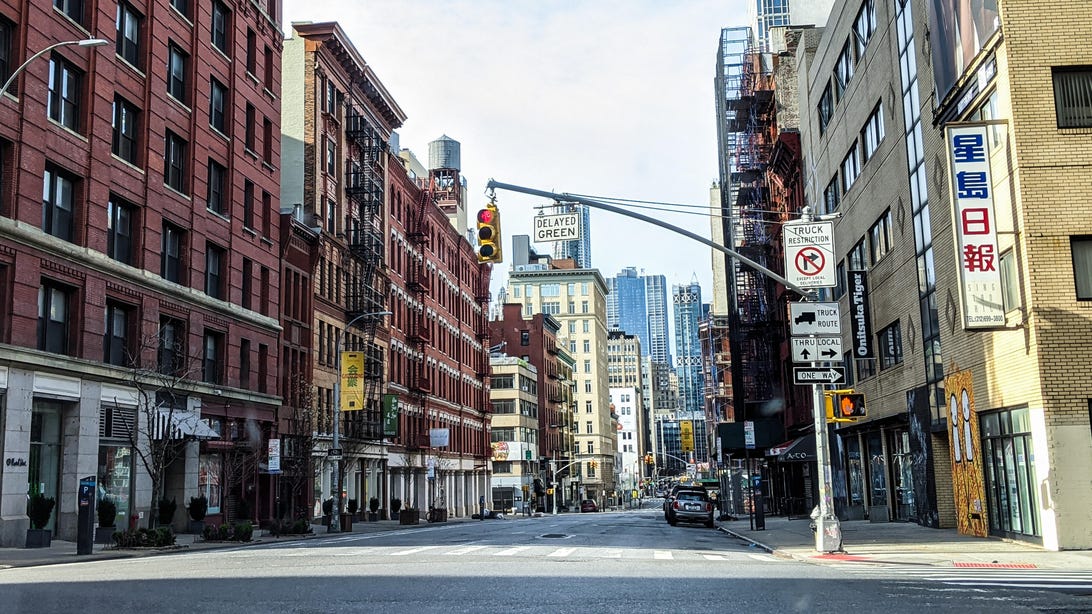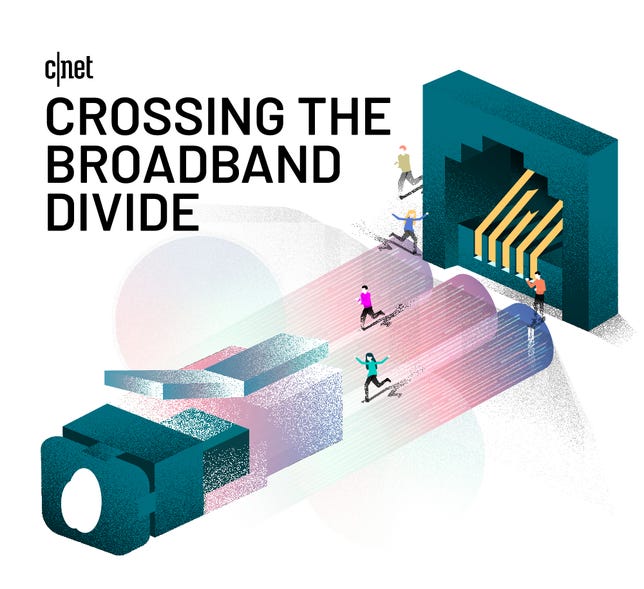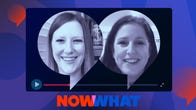Microsoft expands reduced-price tag broadband push to 8 metropolitan areas to address racial, electronic inequality

New York is between the cities qualified by Microsoft’s Airband Initiative.
Sarah Tew/CNET
This tale is part of Crossing the Broadband Divide, CNET’s coverage of how the country is doing work towards building broadband entry common.
Numerous People in america won’t be able to manage world wide web provider at property. Microsoft desires to adjust that. The application giant reported Wednesday that it truly is growing its Airband software, which was to begin with created to connect rural locations, to eight towns: Atlanta, Cleveland, Detroit, Los Angeles, Milwaukee, New York, El Paso, Texas, and Memphis, Tennessee.
These are areas where broadband infrastructure mainly exists but where “the relationship and gadgets to make the most of it are unaffordable, leaving access to necessities of life out of access for thousands and thousands,” Vickie Robinson, general supervisor of Microsoft’s Airband Initiative, stated in a weblog write-up. The gap is “especially acute in Black, African American, Latinx and Hispanic communities,” she included.

Alongside with enabling cheap broadband, Microsoft will make devices a lot more affordable by delivering cost-free and lower-cost refurbished computer systems and tablets to communities of shade by associates like PCs for People today, Human-I-T and PlanITROI, a organization whose Digital Dreams Venture gives refurbished units to K-12 students in will need. Microsoft ideas to assist initiatives to instruct local community members electronic capabilities.
Some people today with no online assistance at home have hardly ever applied computer systems or constructed the techniques desired to locate higher-paying jobs in modern economic system. And the organization will help group businesses — its companions in its thrust to get persons on line — become a lot more up-to-date technologically. The organization stated its Airband growth is section of its Racial Equity Initiative, which aims to address racial inequality and injustice for the Black and African American neighborhood in the US.
“If you believe about the digital divide … the 1st issue is getting obtain to regions that don’t have any options,” Robinson reported in an job interview with CNET. “In urban centers, it’s a different problem. In many cases there [is] at minimum one particular existing solution for broadband accessibility, but it is really not accessible … mainly because of affordability problems.”
Thousands and thousands of People close to the region lack access to rapid online at residence, a have to have that’s become particularly significant more than the past yr, as the COVID-19 pandemic compelled almost everything from relatives gatherings to classes and organization meetings to go on the net. Federal and point out governments have earmarked billions of pounds to make out quick world-wide-web company, but most will not deal with 1 of the biggest explanations folks really don’t have broadband at property: They are not able to afford to spend for assistance.
It’s unclear just how large the affordability issue is in the US, but reports present it disproportionately impacts people of colour, together with youngsters. A joint examine final calendar year from the Alliance for Great Instruction, Countrywide Indian Instruction Affiliation, Nationwide Urban League and UnidosUS uncovered that 34% of American Indian/Alaska Native households and about 31% each individual of Black and Latino families deficiency entry to superior-pace residence internet, compared to 21% of white families.
Microsoft, which tracks how quickly people download its software and security updates, said Wednesday that the number of people in the US who don’t use the internet at broadband speeds totals about 120.4 million, or more than a third of the country’s population. That’s an improvement from its December tally of about about 157.3 million people in the US lacking fast internet.
Rural areas still have the worst connectivity — like Apache County, Arizona, where only 7% of people use the internet at broadband speeds — but even big cities have troubles getting people online. In New York, only 55% of people use the internet at broadband speeds, Microsoft said.
There’s hope the situation will improve. President Joe Biden, in his $2 trillion infrastructure plan unveiled in March, initially pledged $100 billion over eight years to make sure every American has broadband access. He said affordability would be a big part of that. And then in mid-May, the government introduced a $50 Emergency Broadband Benefit to get people online. Since the initial infrastructure proposal, Biden has cut his broadband proposal to $65 billion, which matches an amount that’s been proposed by Republicans.
Making broadband ubiquitous
While the government has tried to bridge the digital divide, companies have launched their own efforts. Facebook, for one, has looked at ways to quickly and cheaply install fiber, including through tightrope-walking robots, and it has experimented with programs like internet-beaming drones and apps that let users briefly browse text on any mobile website for free. Google’s Loon project aimed to beam internet to rural users from balloons, but the company shut down the project earlier this year because it wasn’t sustainable.
Microsoft has taken a different tack. The software giant launched its Airband Initiative in 2017 to bring high-speed internet to rural communities using unlicensed TV wireless spectrum. TV white spaces, as the airwaves are known, are TV broadcast channels that are no longer used. They were made available by the transition from analog to digital TV.
At the time it launched the program, Microsoft aimed to connect 2 million people in the US by July 2022. It later boosted its goal to 3 million people in the US and 40 million others around the globe in the same time frame.
Microsoft has had some struggles getting people connected in rural areas. The National Association of Broadcasters in late May called Airband and the use of TV white spaces “hot air.” It noted in a blog post that when Microsoft introduced Airband, there were 800 white spaces devices operating across the entire country. Today there are only about 300, it said.
“Four years after we pointed out that white spaces had not achieved any material success at scale, use of the technology went down,” NAB said.
Microsoft in a statement acknowledged that the use of TV white spaces to provide broadband service hasn’t gone as well as it hoped.
“Connecting the millions of people without access to broadband is a national priority and requires us to innovate quickly and learn what works best and what doesn’t,” Microsoft said in a statement. “That’s why when we launched Airband in 2017, we advocated to use the technology that best fits each community. [TV white spaces], which is a connectivity tool in many parts of the world, has the potential to help rural Americans, but progress in the TVWS policy landscape has been slower than we had hoped.”
Instead of using TV white spaces, it’s working with other technologies in urban areas. That includes 5G millimeter-wave fixed wireless internet service and satellites, based on the geographies and needs of the different areas.
And rather than offering service itself, Microsoft partners with internet service providers and community organizations. On Wednesday, it said it will work with partners to build new broadband infrastructure in some locations and help communities of color find and sign up for existing affordable broadband services in others.
“Since every community is unique, we’re working with our partners and local leaders to ensure we use the right mix of technology to serve the most people possible,” Robinson said in the blog post.
Working with Starry in LA and Detroit
In Los Angeles, Microsoft will work with Starry, a company that provides inexpensive broadband service to public and affordable housing communities around the US through its Starry Connect initiative. Starry provides 30 Mbps speeds up and down — faster than the federal definition of broadband at 25 Mbps down and 3 Mbps up — for $15 a month. Last year, the average monthly cost for internet service in the US was $60, according to a study by price comparison service Cable.co.uk, and Comcast’s Internet Essentials plan connects low-income families for $10 a month.
Microsoft and Starry are setting up new connections to provide affordable broadband in four Housing Authority of the City of Los Angeles communities in Watts and Central-Alameda. Instead of tying service to an individual — which traditionally has required ISPs to perform credit and background checks — Starry provides service based on an address. If someone lives in one of LA’s public housing apartments, that unit and whoever resides there can get Starry service. The $15 monthly service price includes all equipment, installation, 24/7 customer support, no data caps, no long-term contracts and no extra fees.
The two companies have run a pilot program in LA since the fall, and they have already connected nearly 1,000 households.
“When you have to kind of ask somebody to reaffirm three different ways that they are poor enough to deserve access to service, it really is just a terrible, kind of soul-crushing experience,” Virginia Lam Abrams, Starry’s senior vice president of government affairs and strategic advancement, said in an interview. “By removing the whole prove-to-me-that-you’re-poor threshold, I think you bring a lot more people to the door [who] are willing to say ‘yes, I’m going to sign up for the service.'”
Along with LA, Microsoft is working with Starry to launch its affordable service for the entire city of Detroit, particularly in underserved and income-insecure zip codes. “Our goal is to connect tens of thousands of households across the Detroit metro area,” Robinson said in a blog post.
Microsoft also created a financing program for Starry’s low-cost broadband customers to help people who have low credit scores or no credit history and therefore would otherwise be ineligible for financing. That will enable those customers to buy a Microsoft Surface Go 2 and Office for Home and Student for $22 per month. Microsoft already has introduced that program in Los Angeles and New York and will roll it out to the remaining six cities over the coming months.
Other efforts
In Cleveland, Microsoft has partnered with nonprofit PCs for People state and local governments local companies like the Eaton Corp. and GE Lighting, which is owned by Savant and other area organizations, such as University Hospital, Metro Hospital and the East Cleveland Library One. The funding helped PCs for People launch a pilot in April in East Cleveland to provide 1,000 households low-cost, high-speed internet and affordable devices.
East Cleveland “is actually one of the most digitally disconnected communities in Ohio, … and Ohio is actually one of the most digitally disconnected communities in the country,” Bryan Mauk, chief innovation officer for PCs for People, said in an interview. “So it’s kind of like the epicenter of the lack of internet connectivity.”
PCs for People mounted antennas on buildings at University Hospitals, Case Western Reserve University and the East Cleveland City Schools to broadcast broadband signals to individual homes. The service costs $15 a month for 50 Mbps down and 10 Mbps up.
“We don’t want to blanket a city, and we don’t want to blanket a state,” Mauk said. “We’re interested in neighborhoods no one else wants to serve.”
Microsoft also is working with PCs for People to bring fixed wireless access to about 1,700 residents of the Lindsay Heights neighborhood of Milwaukee.
“Once a stop for the underground railroad and a thriving center for African Americans, this community has suffered due to poverty and economic instability, but investments in digital equity can help,” Robinson said.
In areas that already have affordable service, Microsoft is working with EveryoneOn to make sure people know what’s available. The nonprofit has a bilingual offer locator tool that can help people in the eight cities find inexpensive service, and it then guides them through the sign-up process, helps them find affordable computers and starts digital literacy training. Once someone signs up through EveryoneOn, they will be offered three months of free broadband service, Robinson said.
“While COVID-19 created a national crisis, it also laid bare the devastating impacts the digital divide has on Black, African American, Latinx and Hispanic communities,” Robinson said. “But it also created momentum: people are more aware of the problem and — we hope — are willing to move quickly to fix it.”

